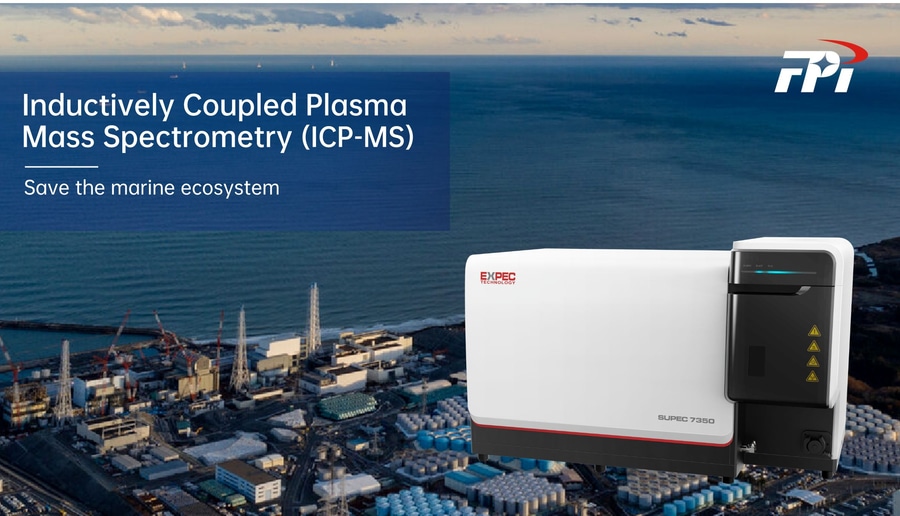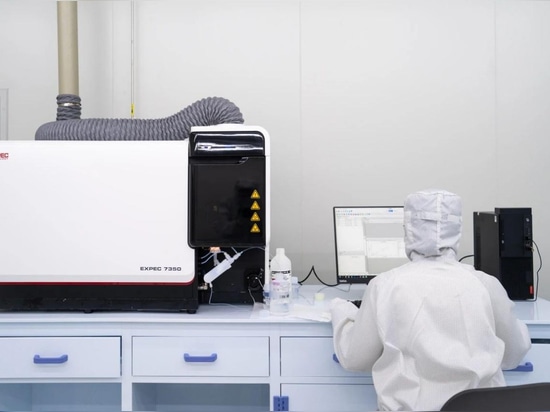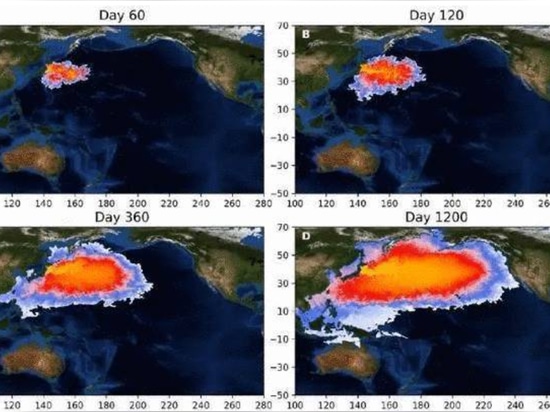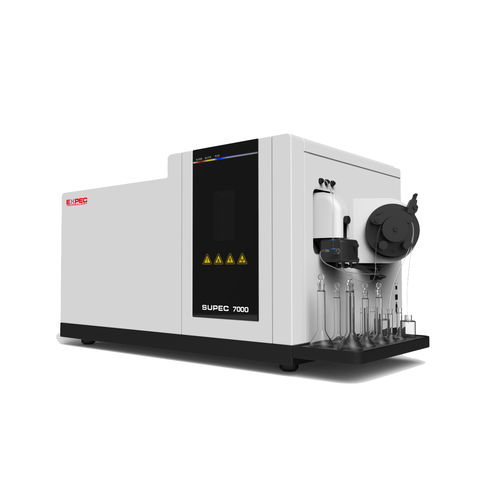
#Industry News
FPI ICP-MS/MS Accurately Detects Radionuclides in Nuclear Effluents for Food Safety Regulation
How can we protect us facing to the unclear-contaminated water?
Japan's Tokyo Electric Power Company, so-called TEPCO, held a press conference to announce that at 13:00 local time on August 24, Japan's Fukushima Daiichi nuclear power plant will start nuclear-contaminated water discharge. The first sea discharge will discharge about 460 tons daily, lasting 17 days, a total of about 7800 cubic meters of nuclear-contaminated water.
The Fukushima Daiichi nuclear power plant is located close to the sea. The discharge of a large amount of nuclear-contaminated water, coupled with the effects of the ocean currents that already exist along the coast of Fukushima, will cause radioactive substances to spread to half of the Pacific Ocean within 57 days from discharge. The effects of nuclear contamination will begin to be felt in North America three years later and will spread to the world's oceans in ten years, affecting all aspects of the world's fish migrations, pelagic fisheries, human health, and ecological safety.
Gao Zhiguo, president of the Chinese Society for the Law of the Sea, told the media that there is now a relatively unanimous view in the international academic community that there are 64 types of nuclear radioactive substances in the contaminated water at Fukushima. According to the initial distinction based on the length of the half-life of their decay, the share produced, the amount that may be present and the possibility of long-distance migration and other factors, eight of these nuclides - tritium (3H or T), cesium-137 (137Cs), cesium-134 (134Cs), strontium-90 (90Sr), strontium-89 ( 89Sr), cobalt-60 (60Co), iodine-129 (129I), antimony-125 (125Sb) and ruthenium-106 (106Ru) are collectively referred to as nuclear accident characteristic nuclides.
It is not only seafood off the coast of Japan that is affected by nuclear effluent discharges. With the movement of ocean currents, seafood from fishing grounds in the Pacific Rim is involved. One of the isotopes of the above nuclides that has the most significant environmental impact is strontium-90 (90Sr), which is a fission product of uranium and plutonium and has a half-life of 29 years because it can remain in the total environment for a considerable period. When 90Sr is ingested by an organism, the element accumulates in the skeleton and continues to produce beta radiation, which may cause serious harm to the organism. Therefore, assessing 90Sr environmental contamination is critical to local human and environmental health issues.
Analytical methods for radionuclides
Currently, there are various instruments used to analyze the content of radioactive elements, among which Inductively Coupled Plasma Emission Mass Spectrometry (ICP-MS) has many advantages, such as wide linear range, very low detection limit, high sensitivity, fast analysis speed, etc., which is widely used in the analysis of radioisotopes with extended half-life.
Most ICP-MS is dominated by single quadrupole, but single quadrupole ICP-MS in the analysis of radioisotopes easily encounters multi-atomic ion interference, and the more significant challenge of homogeneous isotopes ion interference, such as the interference of Zr90 to Sr90 and the interference of Ba137 to Cs137, etc., the interference component and the mass number of the ion to be measured is too close to the single quadrupole ICP-MS for the elimination of such interferences is very limited, in which case it is necessary to use the triple quadrupole ICP-MS for the complete elimination of interferences.
The triple quadrupole ICP-MS can be set in Q1 to allow only a specific m/z mass number of 135 to pass through, thus rejecting 119Sn+, and then the reaction gas is passed through the collision reaction cell, and Q2 is set to allow only m/z mass number of 135 to pass through, thus rejecting 151BaO+, which realizes the thorough removal of interference through the double screening effect of two quadrupoles.
FPI's Triple Quadrupole ICP-MS features two independent HF pure molybdenum quadrupole mass filters. The first quadrupole (Q1) will reject all ions other than the target analyte ions, thus simplifying the reaction process in the reaction cell; the second quadrupole (Q2) will filter the ions appearing at the outlet of the cell, allowing only the target analyte ions or product ions to pass through to reach the detector, and at the same time with the high-performance collision reaction cell, it can realize a variety of gas reaction modes, such as oxygen, ammonia, hydrogen, etc., and achieve complete elimination of interfering substances. The complete removal of interfering substances can be realized by combining the high-performance collision reaction cell.
The fourth generation triple quadrupole high-end inorganic mass spectrometry product ICP-MS/MS, independently developed by FPI, has systematically overcome the core technical difficulties of mass spectrometry, such as high-temperature gas flow field control, multi-stage gradient vacuum, highly sensitive ion interfaces, distributed collision reaction cell, and temperature and humidity resistant quadrupole mass analyzers, etc. It is combined with liquid chromatography coupling, gas on-line dilution system, automatic fast sampling, oxygenated combustion, laser stripping, direct atmospheric injection, organic injection, and other dedicated technologies to satisfy the needs of various professional applications.
It is suitable for elemental analysis, isotope analysis, and elemental morphology analysis of all kinds of samples in different application fields and meets the analytical requirements of environment, food, geology, chemical industry, biology, materials, metals, semiconductors, nuclear industry, and so on.
Japan's nuclear sewage discharge into the sea has caused panic among the people of neighboring countries, and there is a high degree of concern about the hazards posed by the discharge of nuclear sewage into the sea. Neighboring countries have issued relevant decrees to ban food imports from Fukushima and its ten nearby prefectures and have strictly examined the supporting documents of videos, especially aquatic products, from other parts of Japan. People can not help but ask, can we still eat seafood? How will nuclear sewage discharge into the sea affect people's lives?
Some experts said that radioactive isotopes are volatile substances that not only pollute the ocean, but they can exist in the soil and air, whether it is food, skin care products, clothing, etc., in the long term, it seems, will be affected to a certain extent. However, government departments can combine the application of scientific instruments on the market video and consumer products for a comprehensive assessment and testing. In that case, it will be able to detect problems promptly and provide a scientific basis for the management of decision-making on the flow of goods to protect the environment and human health better.
Let's believe in science, respect science, and make informed decisions about protecting the global marine environment through a transparent, science-based approach to nuclear wastewater discharges.







